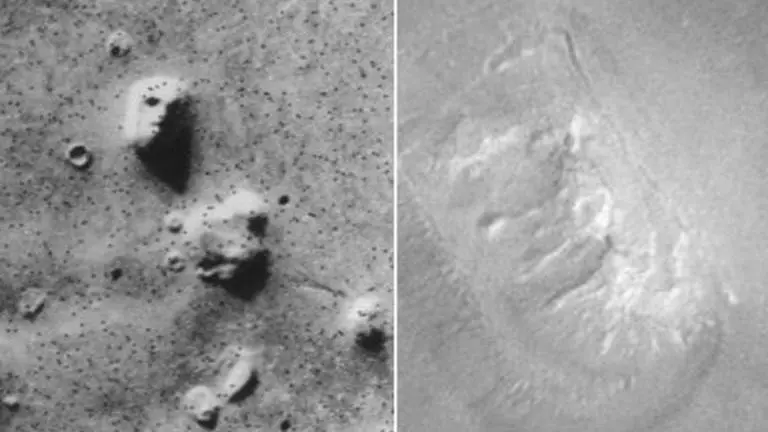Updated 19 May 2022 at 16:01 IST
NASA's orbiter spots strange faces on Mars; agency addresses pareidolia-caused confusion
NASA says that pareidolia is the phenomenon that enables us to see recognizable shapes in objects or data that are otherwise not familiar to us.
- Science News
- 2 min read

The human mind has a tendency to recognise shapes that are familiar and are something we can relate to. Many individuals have the ability to spot different features in clouds, rocks and even celestial bodies, a characteristic that is driven by pareidolia. According to NASA, pareidolia is the phenomenon that enables us to see recognizable shapes in objects or data that are otherwise not familiar to us.
Explaining the interestingly strange phenomenon, NASA shared a picture that was captured by the Viking Orbiter in 1976. The image below is a collage of two separate photographs taken years apart. According to the agency, the photo on the left was taken in 1976 and the one on the right was taken from Mars Global Surveyor's Mars Orbiter Camera in 1998. While many pointed out that the landscape looks like a human face, NASA said that it failed to stand the test of time and got eroded with time.
[Photo from Viking Orbiter on the left (1976) vs Photo from Mars Global Surveyor Orbiter on the right (1998); Image: NASA]
Other cases of pareidolia
Recently, an image beamed by the Curiosity rover from Mars went viral as it featured a strange doorway, something that was recognised by space enthusiasts. In a recent tweet, the Curiosity mission team said, "Some of you have noticed this image I took on Mars. Sure, it may look like a tiny door, but really, it’s a natural geologic feature! It may just *look* like a door because your mind is trying to make sense of the unknown".
Advertisement
(Doorway spotted by Curiosity rover; Image: Twitter/@MarsCuriosity)
The agency shared a number of other images such as the one captured by the HiRISE camera onboard NASA's Mars Reconnaissance Orbiter. NASA said that the spacecraft's image was the source of what it called a "muppet" sighting.
Advertisement
(Image: Twitter/@HiRISE)
Stating that many of such images are fan-made works, NASA said that they are fun to look at but not scientifically accurate. "Sometimes, people get spacecraft images and video mixed up, so it can be hard to tell what image was taken when, by which spacecraft, and whether it's a legitimate NASA image", the agency said in a statement.
Published By : Harsh Vardhan
Published On: 19 May 2022 at 16:01 IST



